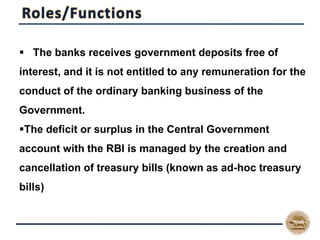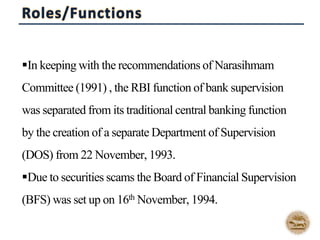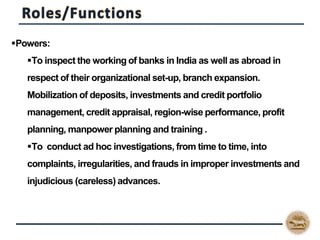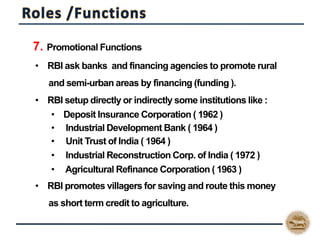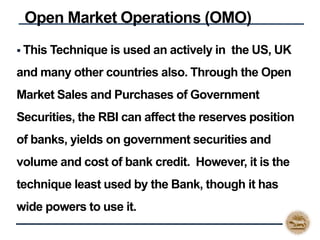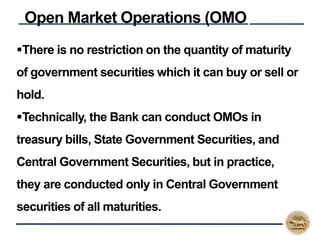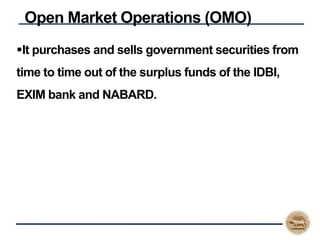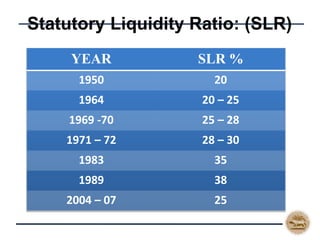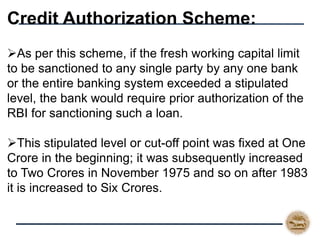The Reserve Bank of India was established in 1935 to regulate banking and credit in India. It was established with a share capital of 5 crores and nationalized in 1949. As India's central bank, the RBI guides and regulates the financial system, maintains monetary stability, and acts as a bank for the government and other banks. It performs key functions such as issuing currency, controlling credit and foreign exchange rates, supervising banks, and promoting rural financing to achieve its goals of maintaining monetary and financial stability.

















